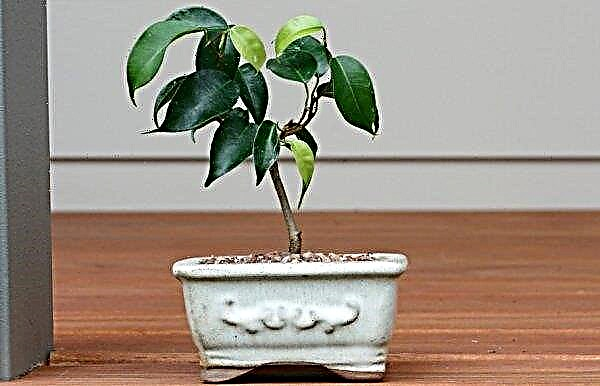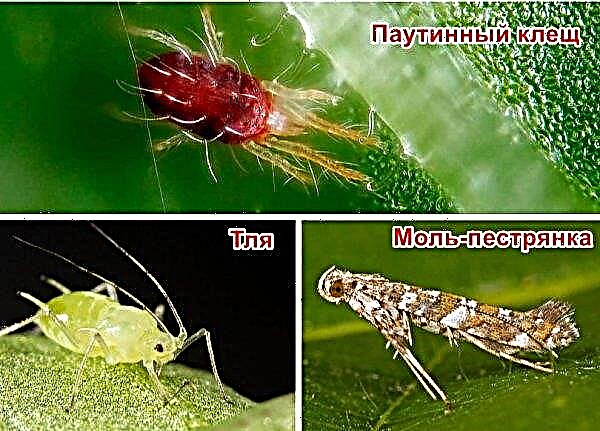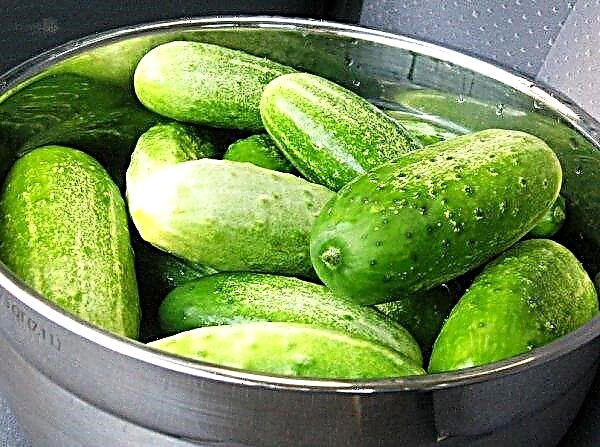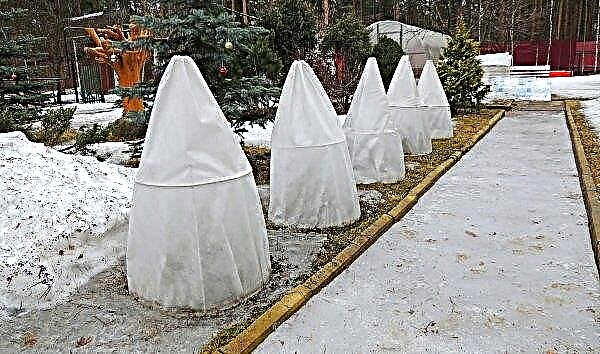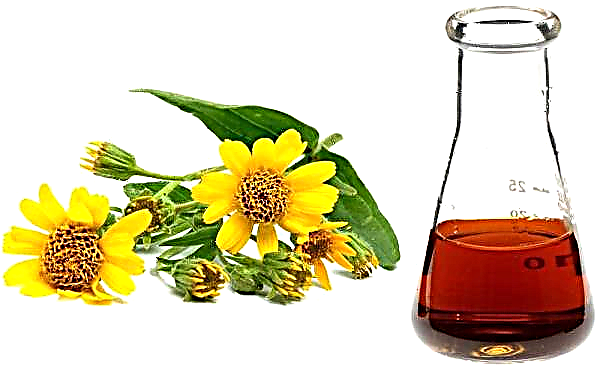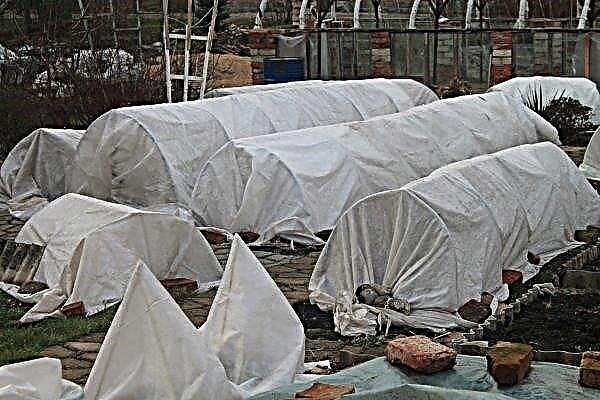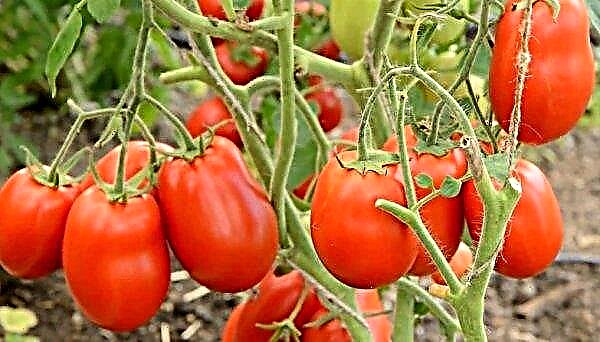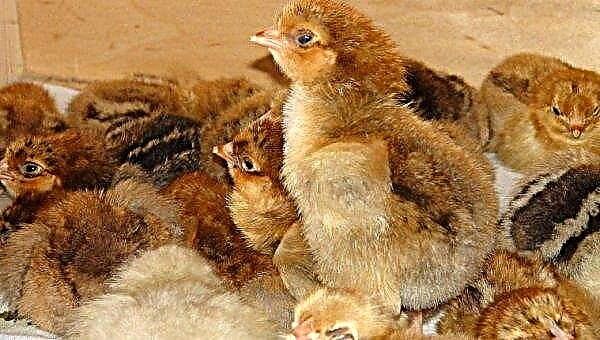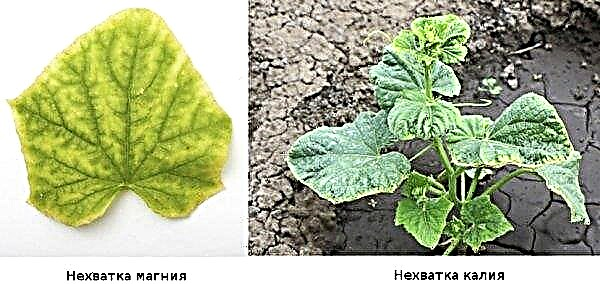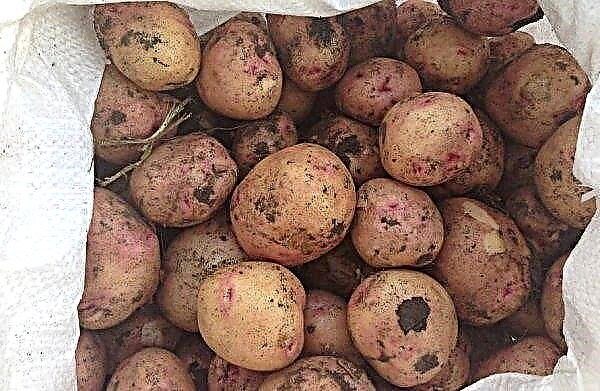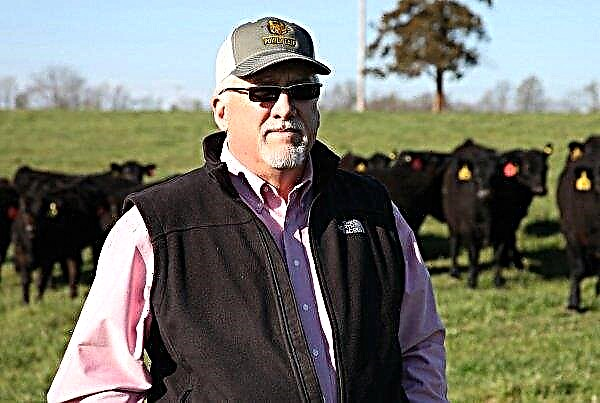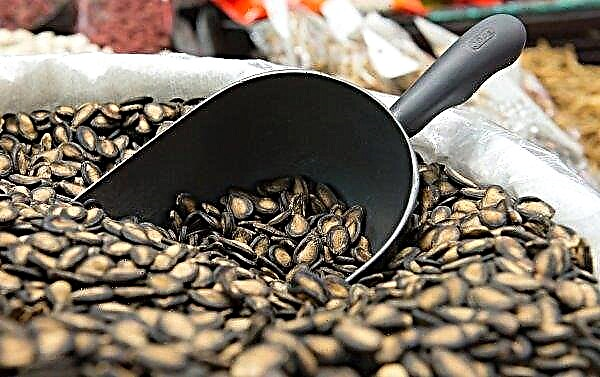To grow and collect a decent crop of cucumbers is the dream of every gardener. After all, cucumbers are the most common and beloved vegetable crop. And to grow a rich harvest and at the same time “save” land is a feasible task even for a beginner summer resident.
Growing cucumbers in a barrel
To obtain a guaranteed abundant crop, one should take into account both the pros and cons of the agricultural technology of cultivation using the “barrel” method.
Did you know? According to the botanical classification, cucumber is a fruit and is considered as a false berry, and culinary - as a vegetable.
Pros
- The following are the benefits of cultivating cucumbers in this way:
- the main advantage of "barrel" cucumber cultivation is significant space savings. Tanks on the site are located in a free, well-lit place.
- saving time on plant care. Due to the limited space watering, weeding, loosening take a minimum amount of time.
- fertilizers, fungicides are much more rationally spent. The amount of chemicals is more easily calculated, since the number of plants and their area of growth are precisely known. Unwanted oversupply is eliminated.
- the taste properties of cucumbers are directly related to the moisture level in the soil. The lack and excess of water makes cucumbers bitter, which is why they lose their consumer qualities. The amount of moisture is much easier to control in case of growth in a confined space.
- when growing cucumbers in a barrel, the obligatory tying of cucumber lashes is not required. Ripe fruits are easy to harvest.
Minuses
- You should also pay attention to the "weaknesses":
- check humidity level more often. Unlike a standard garden bed, a “barrel” plant lacks additional access to groundwater. Seedlings have a weak surface root system, and without constant soil moisture, green surface plant mass dies. This problem can be solved by drip irrigation.
- the walls of the barrel are heated, so it is a constant obligation to control the temperature of the soil.
How to choose the best cucumbers for planting in a barrel
When choosing seed for planting, it should be borne in mind that soil located in a limited space of the tank will warm up faster than in open beds, so it is recommended to use seeds of early varieties and hybrids.
Well proven:
Late-ripening hybrid varieties are also great for barrel-growing. The high location of the soil layer relative to ground level virtually eliminates the risk of spring freezing of the soil in the container, which favorably affects the formation of a healthy plant. The fruiting period is prolonged.It is worth paying attention to such varieties as:
Experienced summer residents are advised to plant together seeds of different ripening dates. This ensures a constant rhythmic yield over a long period of time.Preparatory Activities
In order to grow a rich harvest, special attention must be paid to the so-called preparatory process. Each gardener knows the important role played by the choice of bed localization, the correct and timely formation of a fertile layer, and the provision of drainage. In the same way, one should approach the formation of the soil layer in the barrel. The requirements for the barrel as a landing capacity are minimal.
Important! Particular attention should be paid to drainage when using a plastic barrel, since the polymer material of which the container is made is not hygroscopic.
The shape and material do not matter - wooden, metal, plastic. If there is no bottom, the container is quite suitable for growing plants. The standard volume is 200 liters, but using containers of a smaller volume (for example, buckets) is also acceptable. The main thing is to make holes in the bottom and walls for drainage. It is necessary to make sure that there are no contaminants on the inner surface of the planting space that can negatively affect plants and soil (mold deposits, residues of fresh oil paint, oil products). In an iron container, the walls warm up more intensively than in polyethylene or wooden, therefore, in order to avoid overheating, it is recommended to wrap them with an old dense fabric, a dense film in several layers, as insulation.
In an iron container, the walls warm up more intensively than in polyethylene or wooden, therefore, in order to avoid overheating, it is recommended to wrap them with an old dense fabric, a dense film in several layers, as insulation.
Where to put the barrel
Cucumbers - a vegetable crop, demanding on the temperature regime. This should be taken into account when choosing the location of the barrel at the dacha. Solar, protected from drafts, at a sufficient distance from the gutters on the roof (to avoid getting powerful water streams on the plants) are the main requirements for choosing the location.
How to prepare and how to fill a barrel
Autumn is the best time for the formation of "beds in a barrel." The soil at the time of cucumber planting will decay and settle.
The contents of the container should consist of three conditional layers:
- The first third of the total volume is drainage. Shredded branches of fruit trees and shrubs, grape vines after pruning, fallen foliage.
- The second third is organic. The layer is formed from horse manure or bird droppings, vegetable waste and peeling, mowed grass. It is not recommended to add meat waste, bones.
- The final layer is fertile soil. For its formation, soil from beds, compost, rotted manure are used in equal parts. You can use the prepared primers for vegetable crops, which are sold in specialized stores.
The barrel is covered tightly with plastic wrap.
Preparation of soil and seed
In the spring, before planting the seeds, the film is removed from the barrel and several buckets of warm water are poured into it. The "bed" prepared in the fall will settle and warm up. It is necessary to add fertile soil, leaving 15–20 cm of free space from the surface of the soil mixture to the upper edge of the barrel.
Seed preparation:
- Seeds to be planted in the soil must be soaked for 10 minutes in saline (2 tbsp. Per 1 liter of water). "Empty", small seeds will emerge.
- The next step is preventive disinfection. Seeds are placed for 15 minutes (no more) in a saturated solution of potassium permanganate, and then thoroughly washed. Thus, potential sources of pathogenic microorganisms are removed from the surface of the seeds.
- It is further recommended to stimulate germination. For this, the seed is placed in a solution of a natural stimulant, for example, sodium humate, or in a solution of wood ash (1 part per 1 liter of water).
Important! Hybrid seeds (F1) do not need additional preparatory steps before planting, except for soaking in a stimulating solution.
Seed planting technology
The next stage, which needs to be given maximum attention, is the planting of seed material. Indeed, the future harvest depends on how correctly and on time the planting is made. The sowing process is described below step by step:
The sowing process is described below step by step:
- Planting seeds is carried out in a well-heated, loose soil.
- In the center of the surface of the soil, a recess is made in which a plastic container without a bottom is placed, and holes for drainage in the walls (bottle, bucket). It will be a kind of watering can for water and fertilizers - drip irrigation. There should be a distance of at least 20 cm between the plants; therefore, 4-5 seeds are sown in a 200-liter barrel.
- Seeds are placed in small recesses (approximately 2 cm), sprinkled with nutritious soil on top. Tamp lightly. Watering is not necessary. The film is tightly fixed above the edge.
- The temperature inside the barrel should not fall below + 10 ° C. When the first two leaves appear on the plant, the covering material is removed for a day, and again closed with polyethylene at night.
Subtleties of subsequent care
There comes a period in which the formation of a plant shoot occurs, flowering, fruit ovary. To avoid mistakes and prevent the death of plants, you should adhere to the rules for the care of seedlings.
Watering and feeding
It must be remembered that the soil in the barrel dries faster than in the garden, so watering is carried out more often - 2 times a day with warm water. The hose is not used. Watering is carried out using a manual watering can, avoiding water falling on the leaves (a high probability of sunburn on a leaf plate), or through a drip irrigation system in the middle of the barrel. Top dressing:
Top dressing:
- First feeding - before flowering. Nitrogen fertilizers (urea, urea) are used. Concentration - 1 tbsp. (with top) on 10 liters of water.
- Second feeding - at the beginning of the fruit set. A complex fertilizer containing phosphorus, potassium, nitrogen is introduced into the soil. Proportion - 1 tbsp. on 10 l of water.
- Third feeding - during the period of active fruiting, fertilize the soil with organic fertilizers. Wood ash, mullein (approximately 200-300 g per bucket of water).
It should be remembered that "fresh" mullein and bird droppings are strictly forbidden to bring into the soil under plants. This can cause the death of plants due to too aggressive environments. It is better to prepare a mixture of last year's rotted manure with the addition of water. Any top dressing is done through a drip irrigation system in the center of the barrel.
Soil mulching
Mulch the soil in a barrel after the appearance of sprouts of cucumbers. Mulch is laid in an even layer of 3-5 cm around the plant. Near the stem, they leave space. In the process of sedimentation, the mulch is sprinkled.
- Benefits of the mulching process:
- prevents drying out of the soil, retains moisture;
- frequency of watering is reduced;
- inhibits weed growth;
- no loosening of the soil is required, therefore, the risk of damage to the root system is minimized.
However, you should constantly monitor that the mulch layer is loose in order to avoid moisture stagnation, which entails the formation of pathogenic mold. Cucumber culture is mulched with organic components:
Cucumber culture is mulched with organic components:
- wood chips;
- peat;
- hay;
- dry leaves;
- siderates.
How to tie cucumbers
Despite the fact that the agricultural technology of growing cucumbers in a barrel allows for “free” growth of lashes of the borage without additional support, it is nevertheless recommended to tie the plants. The easiest way is to install a rail about 2 m high in the center of the "bed". A cross is nailed to the upper end to fix the twine on it.
The lower ends of the ropes fix on the upper rim of the barrel at equal distances from each other, forming a "hut". Scourges of cucumbers are carefully guided along the twine, thereby caring for plants and subsequent harvesting are carried out with minimal labor.
Pinching and pinching
To form a strong, abundantly fruiting plant, it is necessary to remove lateral, "minor" shoots. Pinching or pinching is the process of removing minor shoots growing on the main stem. The stepson is easy to determine - it grows from the axils of the leaves, it is not a flower, not an ovary, not a fruit. Scheme of pinching a bush of cucumberThe rules must be observed:
Scheme of pinching a bush of cucumberThe rules must be observed:
- Remove with a sharp knife. Hacking shoots is not allowed, as there is a high risk of damaging the main shoot.
- Perform stepsoning in dry warm weather. By the time of evening watering, the places of cuts will dry out, and the risk of infection of the plant will be minimal.
- For guaranteed rich harvest, pinching is best done during the entire fruiting period., although it is recommended to remove the stepsons in the sinuses of the first 5–8 leaves and the ovary in the sinuses of the first 2–4 leaves.
Basic Harvesting Rules
Harvesting “barrel” cucumbers is a less time-consuming process compared to picking fruits grown in a greenhouse or open ground.
Did you know? Cucumbers contain a rare vitamin K, which plays a role in strengthening bones and stimulates the formation of bone mass.
Simple rules:
- So that the fruits do not outgrow, it is necessary to collect every day - in the morning or in the evening.
- Cucumbers are carefully cut with a sharp knife or scissors. This will avoid damage to the plant.
- Timely remove damaged, rotten fruits to prevent the spread of diseases.
If you follow the simple rules described in the article, the process of growing cucumbers in a barrel will not require additional physical costs, on the contrary, this method is ideal for elderly people with disabilities, with diseases of the spine, as it eliminates heavy physical exertion. Thanks to the enclosed small space, the plants are less susceptible to diseases, do not require additional watering, the ripening time of the fruit is much earlier than the soil, and the fruiting process will continue until late autumn.
Thanks to the enclosed small space, the plants are less susceptible to diseases, do not require additional watering, the ripening time of the fruit is much earlier than the soil, and the fruiting process will continue until late autumn.

